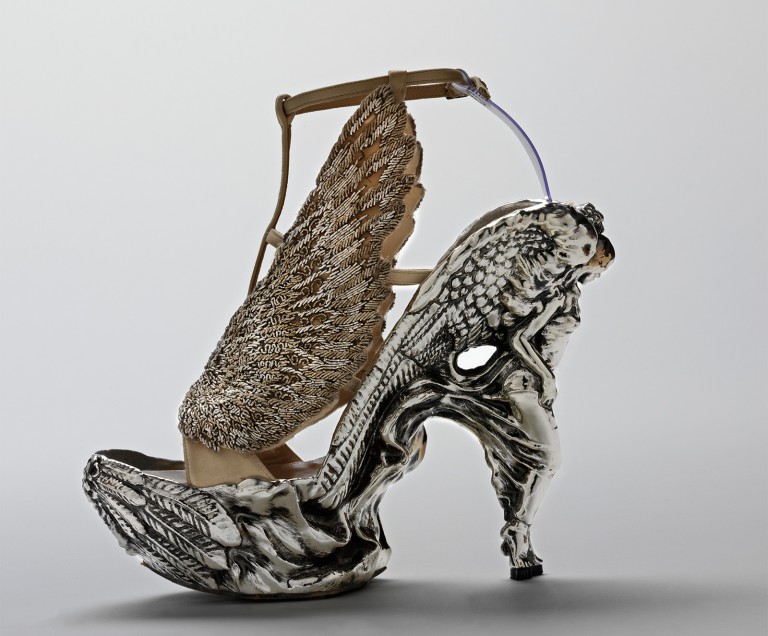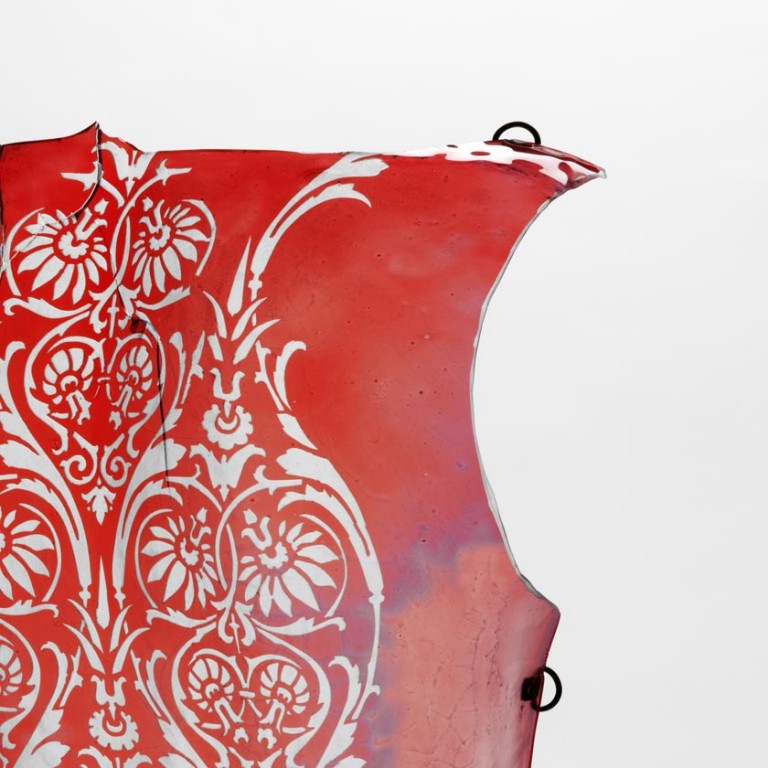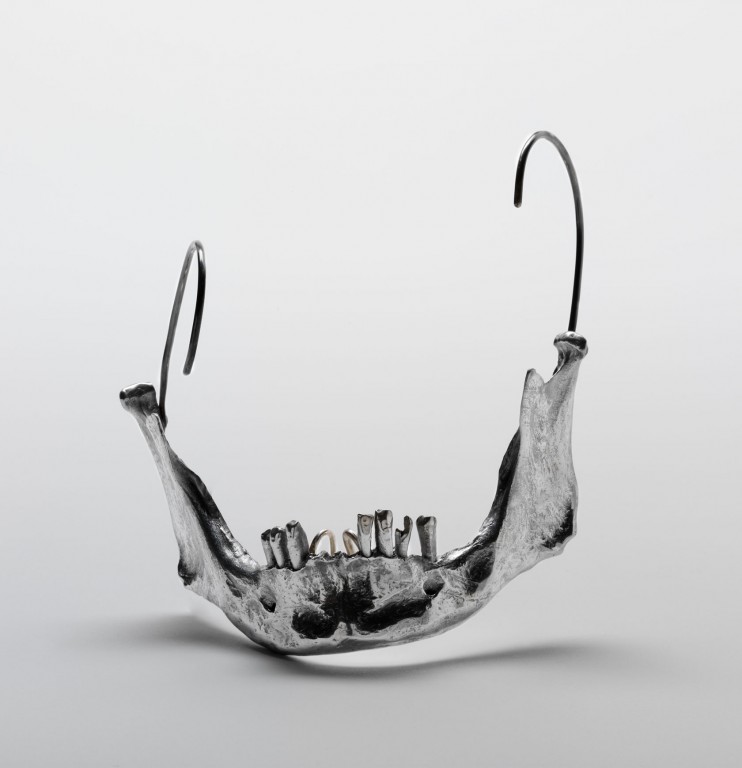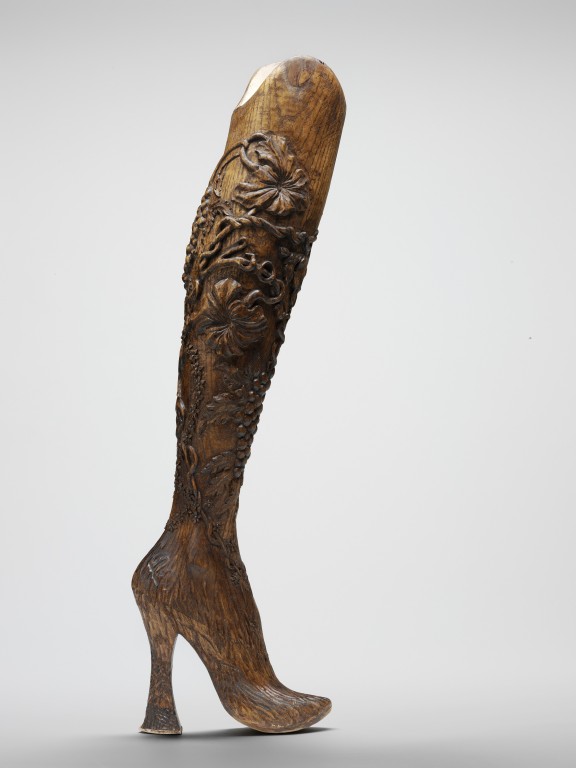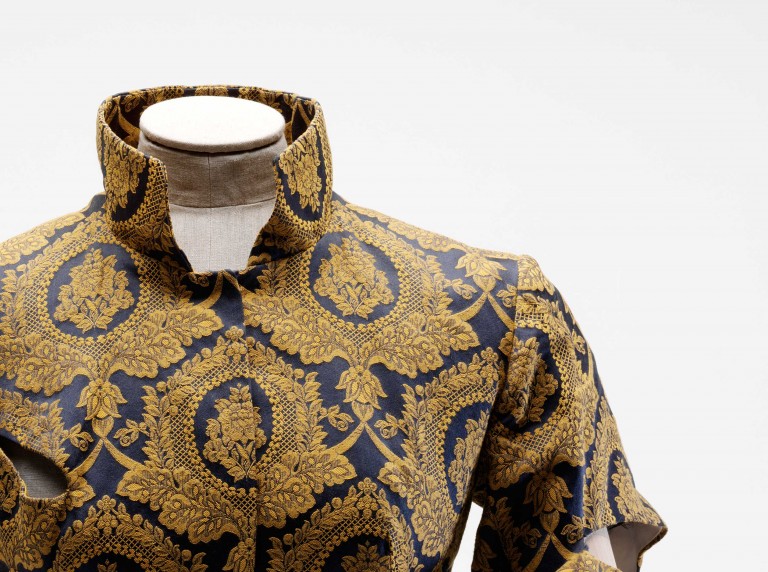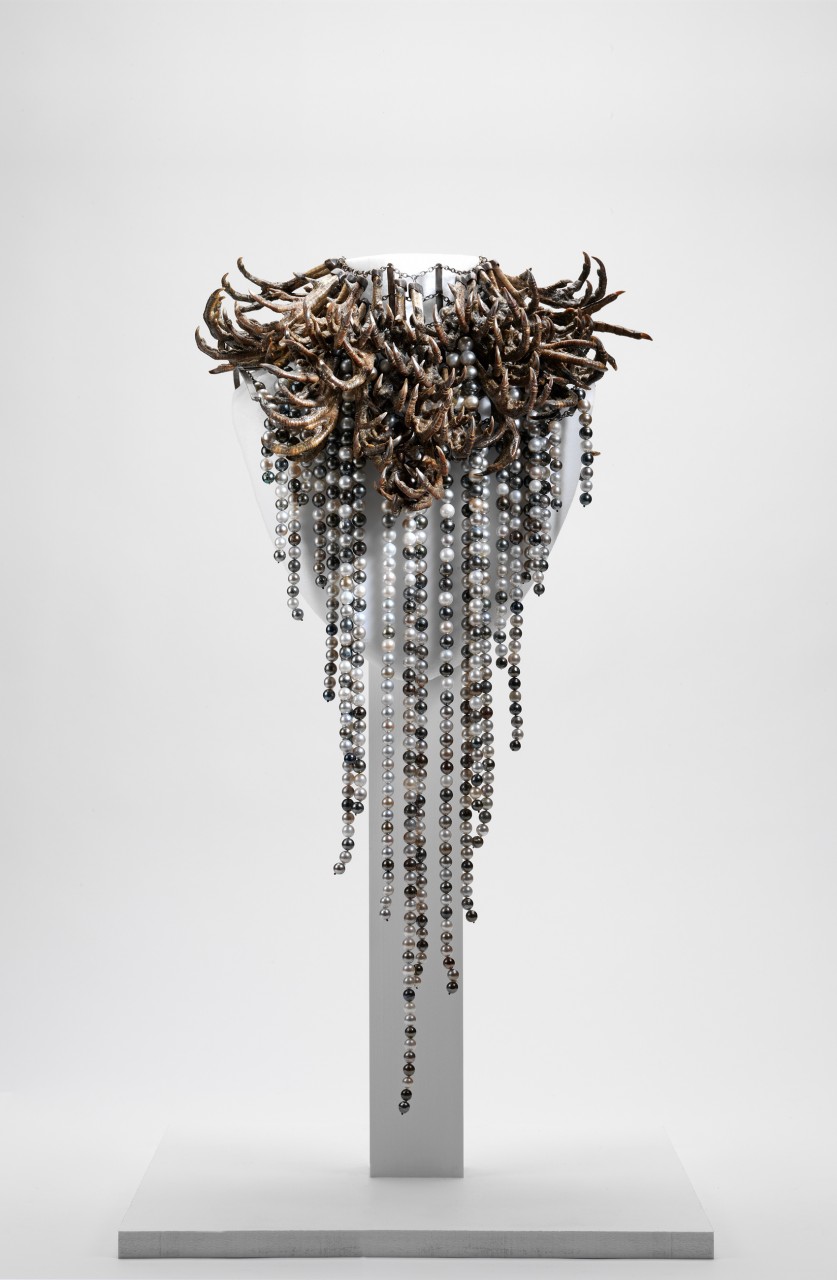ENCYCLOPEDIA OF
COLLECTIONS:
WHAT A MERRY GO ROUND
McQueen’s final presentation at the Gatliff Road warehouse was the stuff of childhood nightmares. A macabre circus emerged on a set constructed to resemble a carousel. The lighting rig recalled that in the marble hall of the Berlin zoological gardens, where German Expressionist vampire film Nosferatu (1922) had premiered. Gothic, dark and disturbing, the theme was not the nostalgia of youth, but childhood fear and vulnerability. McQueen cited the character of the sinister Child Catcher from the family classic Chitty Chitty Bang Bang (1968) as a primary inspiration. In addition to informing a number of designs, the character’s idiosyncratic voice was incorporated into the soundtrack.
Any traces of sentimentality, discernible in the set and the sounds of children playing, were violated by the latex-clad carousel horses and models that pole-danced around the carousel to a conflicting recording of metal and hard rock. Inspired by Bob Fosse’s Cabaret (1972), and styled to resemble German dancers of the 1930s, with dark lips and hair in waves set tight to the head, some models wore black leather great coats and Kaiser Wilhelm caps.
A tableau of automated toys and dummies, dusty through neglect, and dotted about with skeletons, provided a backdrop for models caked in clowns’ make-up; the delicate, 1920s flapper style and embroidered dresses worn by some were in stark contrast to their grotesque features. This juxtaposition of the beautiful and the vulgar was also channelled through accessories, which combined pearls and pheasant claws. In spite of the sinister undertones, What a Merry Go Round was a consolidating collection that revisited a number of designs from previous collections including Joan, Eshu and Voss. It was also a commercial collection. While bias-cut jersey dresses appealed for their wearability, the skull that appeared with crossbones on a black chunky knit would soon be transformed into a signature brand motif. French undertones were also present; overtly in the characters of the Harlequin and the Pierrot, which informed the make-up, and more subtly in designs that echoed French Revolutionary uniforms. McQueen also invoked Eugène Delacroix’s Liberty Leading the People (1830) in a gauzy, silver bias-cut dress that exposed one breast. The engagement with French culture and pointed references to liberty were hardly incidental, for McQueen had recently parted from French fashion conglomerate LVMH to broker a deal with the Gucci Group (Kering). Ironically, he would show in Paris for the rest
of his career.

